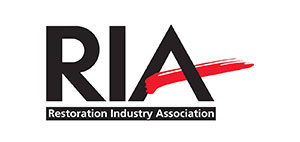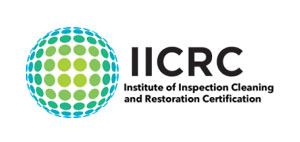Did you know that nearly 40% of real estate losses are due to water damage? This shows how big of a problem water damage is for homes and businesses. But what makes water damage serious? Knowing the signs and how bad it is is key for everyone.
Water damage can come from floods, broken appliances, or burst pipes. The type of water matters a lot. It can range from clean water to very dirty water. Experts say the worst is “black water,” which is very dirty and can make you sick.
On the other hand, “grey water” is not as bad but still can make you sick. This includes water from washing machines or dishwashers. The cleanest water is from broken pipes or rainwater.
Understanding the Categories of Water Damage
It’s key to know the water damage classification to figure out the contamination level. This helps plan the right steps for fixing the damage. Knowing these categories helps spot major water damage and use the right fixing methods.
Category 1 Water Damage: This is from clean water sources like broken pipes or tub overflows. The water is safe and doesn’t harm health. But, it’s important to fix these problems fast to avoid worse damage.
Category 2 Water Damage: Known as “grey water,” it’s contaminated and can make you sick if you drink it. It comes from washing machines, dishwasher leaks, or toilet overflows (not fecal matter). It’s important to clean items well because of harmful waste and chemicals.
Category 3 Water Damage: This is the worst, called “black water,” with very harmful water. It comes from sewage, floodwater, seawater, and groundwater. Quick action is needed to avoid serious health risks and damage.
Knowing how to spot major water damage helps a lot. It makes talking to restoration services easier and keeps health and property safe. This way, we can fix the damage well and stop more harm or mold.
- Class 1 Water Damage: Damage is small with little water absorption.
- Class 2 Water Damage: Damage is bigger, affecting carpet, cushion, and more.
- Class 3 Water Damage: Damage is from overhead, soaking walls, ceilings, and insulation.
- Class 4 Water Damage: Damage is severe, affecting hard materials like bricks and concrete, needing special care.
Understanding these categories helps homeowners and businesses deal with water damage. It keeps health and property safe.
Criteria for Assessing Water Damage Severity
When it comes to water damage, experts use several water damage assessment criteria. They look at how contaminated the water is and how much damage there is. Water damage is divided into three types: clean water (Category 1), gray water (Category 2), and black water (Category 3). These categories help understand the health risks and contamination levels.
Water damage is also classified into four classes. Class 1 has the least damage, affecting only part of a room. Class 4, on the other hand, has a lot of damage, even to materials like hardwood and stone. This requires special restoration methods.
First, experts find out where the water is coming from. If it’s contaminated water, like from a leak or an overflowing appliance, it can spread fast. Quick action is key to prevent more damage and keep foundations and electrical systems safe.
- Identify the Contaminant Level: Find out if the water is clean, gray, or black to know the health risks and needed precautions.
- Class of Water Loss: Check if the damage is small (Class 1) or big (Class 4).
- Extent of Damage Spread: See how far the water has moved in the property.
Using these water damage assessment criteria is key to understanding serious water damage. This helps create a focused restoration plan. It aims to keep the property safe and the occupants healthy. Quick and accurate assessment is vital.
Evaluating the Impact of Significant Water Damage
Water damage does more than just harm your property. It can also affect the health of those living there and the building’s structure. It’s important to spot and fix major water damage signs quickly to avoid bigger problems later.
Water damage is a big issue, causing nearly 40% of property losses. It can damage walls, floors, ceilings, furniture, and even electronics. It’s key to check the damage right away to stop it from getting worse and to fix it properly.
Water damage is divided into three types. Knowing this helps experts figure out how fast they need to act. Here’s what each type means:
- Category 1: Clean water, which is safe for people.
- Category 2: Grey water, which is dirty and can make you sick.
- Category 3: Black water, which is very dirty and can make you very sick.
Knowing the type of water damage helps experts plan the best way to clean and fix it. This makes fixing things faster and more effective.
Calling a water damage expert, like Lyon Restoration, is a smart move. They use special drying methods to fix water damage fast. This not only fixes the damage but also stops mold, which can make you sick.
Water damage can also lower your home’s value and scare off buyers. It’s important to document the damage for insurance claims and to tell future buyers about any problems. This helps everyone make informed choices.
Acting fast when you have water damage is crucial. Whether it’s from a leak, a broken appliance, or a storm, quick action helps prevent more damage. It also makes your home safer for you and your family.
Conclusion
Knowing how to assess water damage is key for property owners and renters. Broken water pipes cause a lot of damage, second only to hurricanes. It’s important to understand the extent and severity of water damage to fix it right.
Quick action is crucial to avoid bigger problems. A small pipe crack can spill up to 250 gallons of water daily. This can lead to a lot of damage if not fixed fast. Knowing the level of water damage helps in fixing it quickly. Contact Lyon Restoration in San Francisco, CA today for professional water damage assessments and restoration.





